In this post, you’ll learn what white hat SEO is, how it compares to black hat SEO, and how to implement white hat SEO tactics.
White hat SEO refers to the use of SEO strategies, techniques, and tactics that are within search engine guidelines. Typically, this refers to Google’s Search Essentials guidelines, since Google is the most popular search engine in the world.
The focus of white hat SEO is the user. White hat SEOs prioritize users by providing relevant, high-quality content rather than content designed to “trick” search engines.
Black hat SEO refers to the use of strategies, techniques, and tactics that do not necessarily follow Google’s guidelines. Its focus is on finding and exploiting algorithmic loopholes.
Sometimes, these black hat tactics can be plain unethical—we’re talking about SEOs spamming competitors with malicious links, injecting other websites with malicious code, and more.
You now know what white hat and black hat SEO mean. But what are the main differences? Here’s a detailed comparison:
- White hat SEO uses keyword research to understand what their customers are searching for so they can create relevant content. Black hat SEO uses keyword research to stuff each page with the “right” keywords so Google will think these pages are relevant.
- White hat SEO focuses on creating helpful, high-quality content that matches users’ search intent. Black hat SEO focuses on programmatically creating many (usually low-quality) pages in hopes of ranking for thousands of keywords on Google.
- White hat SEO focuses on building backlinks that are within Google’s guidelines. Black hat SEO typically focuses on buying backlinks, which are against the guidelines.
- White hat SEO focuses on building for the long term and achieving consistent results. Black hat SEO has a more short-term, “churn-and-burn” mentality—it’s happy to get quick but unsustainable rewards in the short term, “burn down” the site, and build another one.
- White hat SEO focuses on building a sustainable brand and reputation. Black hat SEO can be unethical and may damage a website’s reputation.
- Since white hat SEO is within the guidelines, it’s typically safe and carries less risk. Black hat SEO may help achieve quick, short-term improvements in rankings, but once the tactics are discovered by the search engines, they can be penalized heavily (including completely disappearing from the SERPs.)
There are three main reasons:
1. White hat SEO helps build a long-term brand
Following the law confers no reward. But there are downsides in not following them, such as fines and imprisonment.
The same goes for white hat SEO. Just because you’re following Google’s guidelines doesn’t mean you’re automatically guaranteed higher rankings. And unfortunately, in some niches (for example, payday loans), black hat SEO is the name of the game.
But just like in the real world, not following the “rules” always risks getting caught. In this case, it’s not law enforcement but Google.
If Google discovers you’re using black hat tactics, it could penalize you. When that happens, you’ll see traffic like this:
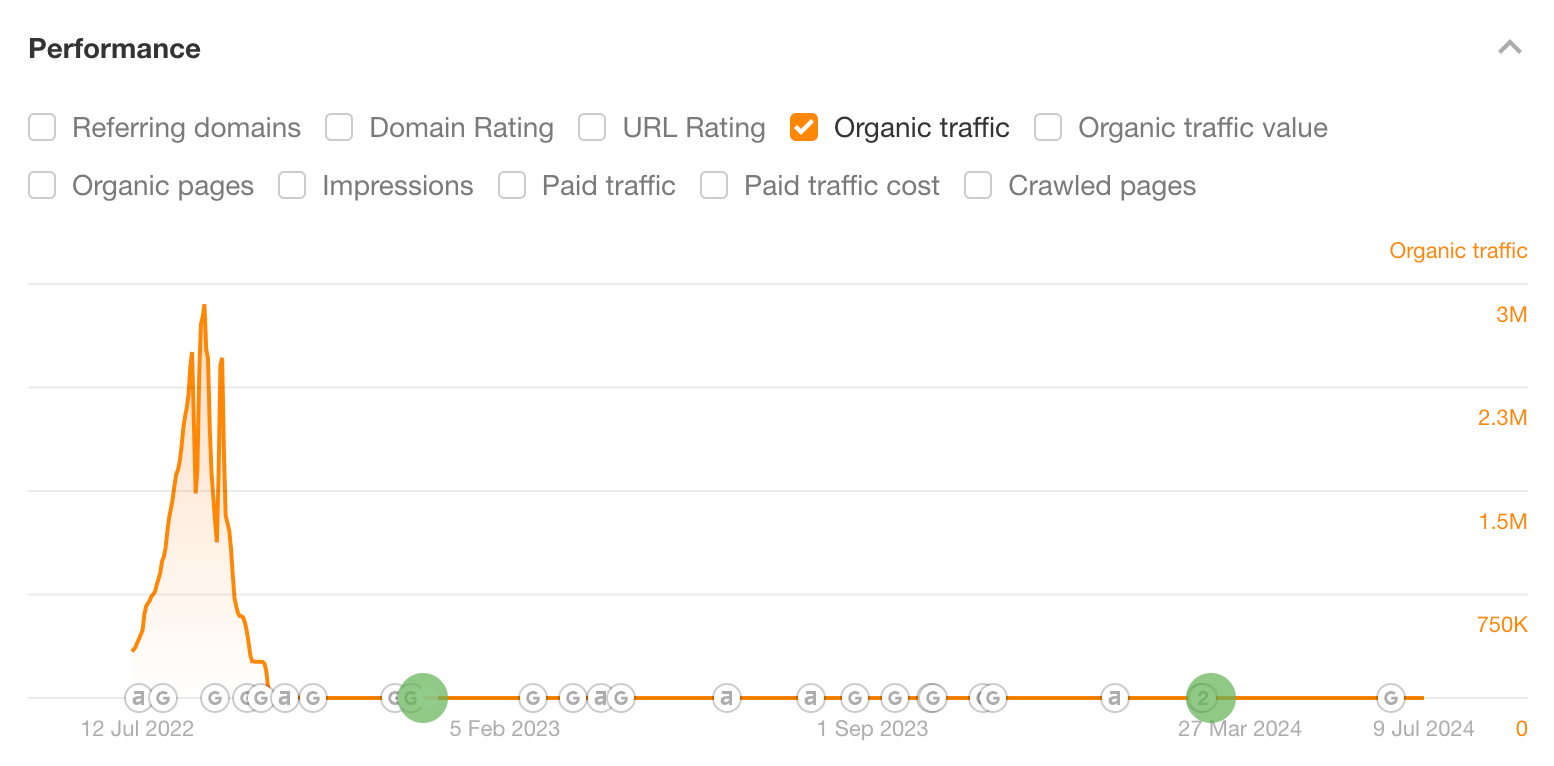
So, if your goal is to build a long-term brand and generate consistent traffic, you’ll have to use white hat SEO tactics.
2. White hat SEO is more cost effective to implement
With frequent Google algorithm updates, low-cost spammy tactics like keyword stuffing, no longer work.
So, if you want to pursue black hat SEO, you might opt for tactics like building a private blog network (PBN). But building a PBN correctly is expensive (e.g., buying expired domains, dedicated hosting, private Whois, etc.), technical, does not guarantee success, and can even result in penalization.
In that case, you may as well invest that money, time, and effort into white hat SEO, which can actually bring long-term traffic and brand value, like our company:
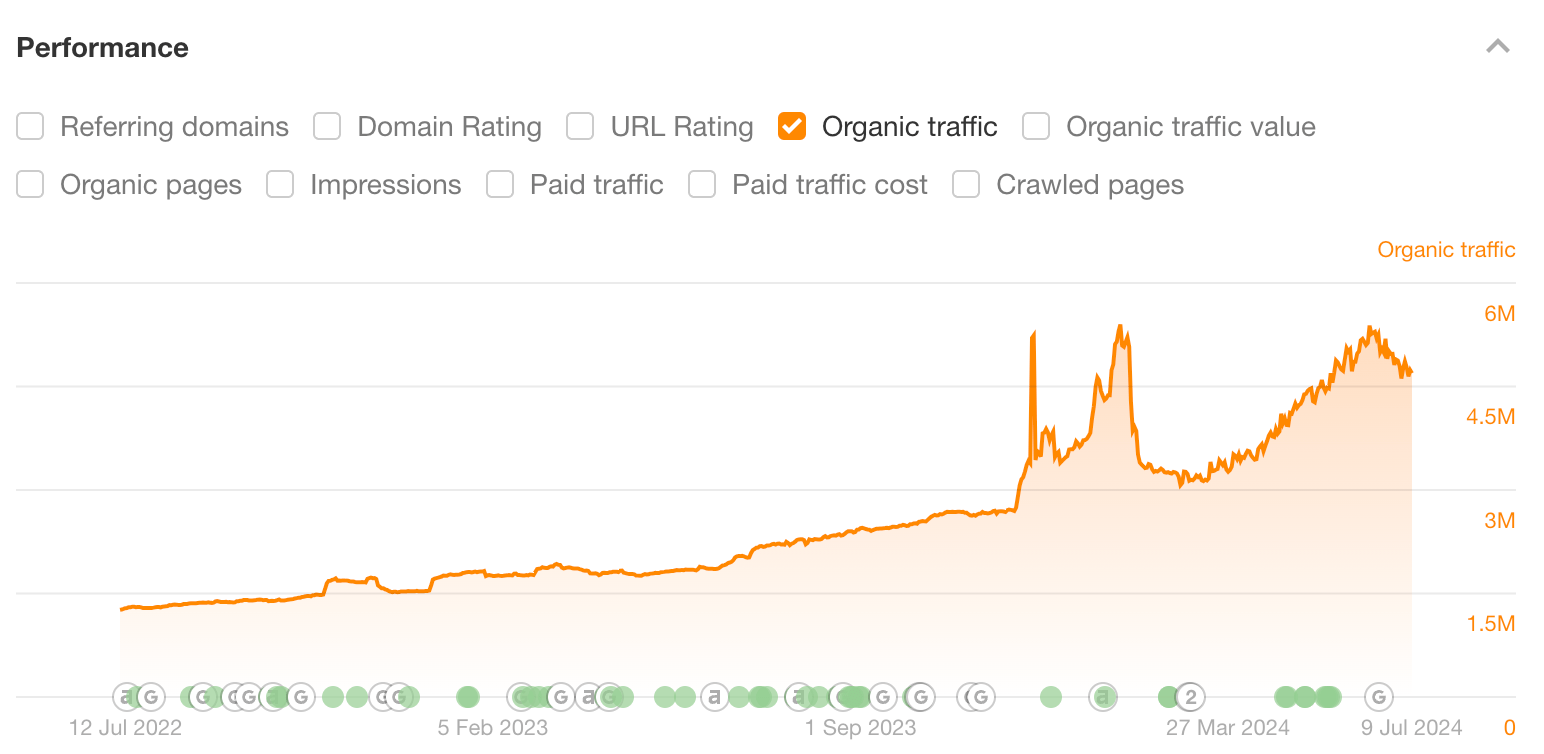
3. White hat SEO makes everyone’s life better
Though you’re an SEO, you’re first and foremost a search engine user. You’re probably Googling for things on a daily basis.
So you may win as a black hat SEO if you successfully spammed Google SERPs, but you’ll lose as a user if everything you search for only contains poor and irrelevant results.
One part of white hat SEO is knowing which tactics violate Google’s guidelines (“black hat”) so you can avoid them. Google has specifically stated these tactics are against their guidelines in their Spam Policies documentation.
You’d want to shun these tactics:
- Cloaking — Cloaking is a deceptive technique that presents different content or URLs to human users and search engines. Cloaked pages show one set of content to search engine crawlers for indexing purposes and a different set to users for engagement. For example, a site may show a page about travel destinations to Google but while showing the same page as a page for discount drugs for users.
- Doorway pages — Also known as a gateway page, doorway pages are webpages created to rank for specific keywords while sending visitors to a different page.
- Keyword stuffing — Keyword stuffing refers to the excessive use of a target keyword in on-page content with the intention of ranking for that keyword.
- Hidden text and links — This is the act of placing text or links that’s not visible to human users (but readable by search engine crawlers). Examples include white text on a white background, hiding text behind an image, and more.
- Blog comment spam — This is where an SEO posts irrelevant comments on blog posts with the sole goal of getting a link back to their site.
- Buying links — This refers to paying another website to link to your website. This ‘payment’ can refer not just to cash but also to goods and services.
- Content scraping — This is when websites ‘steal’ content from other websites and use it as their own.
- Thin affiliate pages — These are pages with affiliate links on which the product descriptions and reviews are copied directly from the original merchant without any original content or added value.
- Expired domain abuse — This is where an expired domain is purchased for its authority and later used to manipulate search engine rankings by hosting irrelevant and spammy content.
- Hacked content — This includes code injection (i.e. hackers gain access to your site and add malicious code), page injection (i.e. hackers gain access to your site and create new pages with spammy or malicious content), malicious redirects (i.e. hackers redirect your pages to spammy or malicious content), and more.
- Scaled content — Using tools such as generative AI (e.g., ChatGPT) to mass-create low-quality pages with no value to users.
How do you get started with white hat SEO? Here are a few tactics you can use.
1. Do keyword research
One of the key best practices in Google’s Search Essentials is to “use words that people would use to look for your content.”
You can find out what these words are by doing keyword research.
Here’s how to get started:
- Go to Ahrefs’ Keywords Explorer
- Enter one or a few relevant words or phrases
- Go to the Matching terms report

Here, you can see nearly two million potential keywords you could target. If they’re relevant, you want to rank for all of them. But you also likely have limited resources, so you should prioritize.
We can narrow the list down by focusing on two metrics:
- Traffic Potential (TP) – Pages no longer just rank for one keyword. It can rank for many and get traffic from all of them. TP is the sum of organic traffic that the #1 ranking page for your target keyword receives from all the keywords that it ranks for. You’d want this to be high.
- Keyword Difficulty (KD) – There are only so many spaces you can rank for on the first page of Google. As a result, SERPs can be competitive. KD gives an estimation of how hard it is to rank in the top 10 organic search results for a keyword on a 100-point scale. You’d want this to be low.
How high TP and how low KD should be depends on your website. But for this example, let’s set them like so:
- TP > 500
- KD < 20

Look through the list and pick out relevant keywords.
2. Create helpful, reliable, people-first content
Google’s Search Essentials states that we should create helpful, reliable, and people-first content.
But what does that mean in reality? Here are the steps you should take:
Align your content with search intent
Google wants to serve relevant content to its users. A key aspect of relevance is whether searchers find the search results useful. In order for search results to be useful, Google needs to understand why searchers are looking for a query so it can serve the right results.
This is known as search intent.
If you want to rank high on Google, you need to figure out search intent. We can do this by analyzing the SERPs for the three Cs:
- Content type – Are they blog posts, product pages, landing pages, or something else?
- Content format – Are they tutorials, listicles, how-to guides, recipes, free tools, or something else?
- Content angle – Is there a dominant selling point, like low prices or how easy it is?
For example, let’s say we’re targeting the keyword “how to save money.”

If we analyze the SERPs for the three Cs, here’s what we see:
- Content type – They’re all blog posts.
- Content format – Despite the “how to” modifier, people are actually looking for a list of ways to save money.
- Content angle – There are a few angles here: “proven,” “simple,” “easy,” and more.
If we want to rank for this keyword, we likely have to create a listicle of money-saving tips.
Cover the topic in full
The best result for a query covers everything searchers want to know. So, if there are subtopics that the top-ranking pages cover, you’ll want to include them in your content too.
Here’s how to find these subtopics:
- Enter your keyword into Ahrefs’ Keywords Explorer
- Scroll down to the SERP overview
- Select three to five top-ranking articles (make sure they’re similar)
- Click Open in and choose Content gap

In the Content gap report, click the Intersection dropdown and choose “4, 5” to see only the most relevant subtopics:
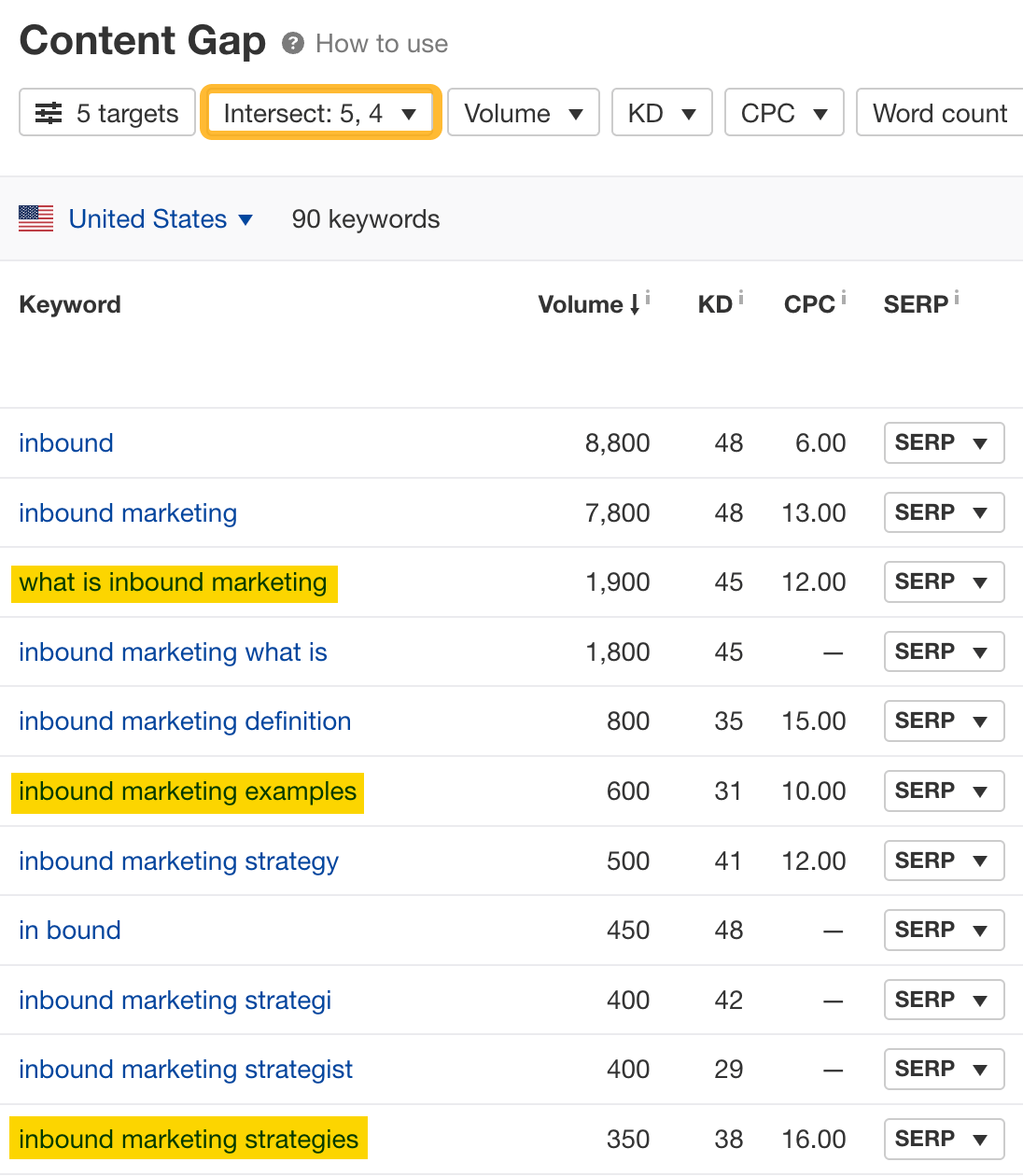
If we’re targeting the keyword “inbound marketing,” these subtopics can make great H2s:
- What is inbound marketing
- Inbound marketing strategies
- Inbound marketing examples
Create something unique and original
Google’s guide on creating helpful content suggests asking these questions:

Simply put: Google wants you to create content that’s unique and original.
How do you do that? Here are a few ways you can stand out from the rest:
- Experimentation – Create new data that is proprietary to you. Run industry surveys, analyze data generated by your company or its products, or execute experiments.
- Experience – Dirty your hands and get skin in the game. Add your personal experience or interview experts.
- Effort – Go further than others and create content that’s more than just words on a page. YouTube videos (or even a series), webcomics, books, free tools, quizzes, and illustrations all work.
Ensure content is created or reviewed by someone with expertise and experience
Google also aims to reward content that demonstrates E-E-A-T:
- Experience – Firsthand or life experience in the topic.
- Expertise – High level of knowledge or skill in a particular field.
- Authoritativeness – Reputation, particularly among other experts and influencers in the industry.
- Trustworthiness – Legitimacy, transparency, and accuracy of the website and its content.
It sounds complex, but it’s what you expect good content to be. If you’re reading something, you’ll likely want it to come from someone with firsthand experience or expert knowledge. You don’t want it to be from a writer who has regurgitated what’s ranking.
Demonstrating this can be as simple as actually using a product you’re reviewing. Or having been to Milan if you’re recommending the best places to visit.
For example, most of our content is created by our marketing team, which consists of people with years of experience in the SEO industry. Like my colleague, Chris Haines, who has worked in SEO agencies for 10 years.
If you do not have the required experience or expertise, hire someone who has to create or review your content.
Make sure your content is easy to read
Nobody wants to read a chunk of text. Your content should be readable for your users.
I recommend following the ASMR formula:
- Annotations – Use elements like sidenotes and blockquotes to break up the post.
- Short sentences and paragraphs – Split long sentences into shorter ones.
- Multimedia – Include videos, images, and GIFs to eliminate extra words.
- Read your copy out loud – Highlight areas where the content doesn’t flow smoothly.
3. Pay attention to on-page SEO
In Google’s own words:
Use words that people would use to look for your content, and place those words in prominent locations on the page, such as the title and main heading of a page, and other descriptive locations such as alt text and link text.
You’ve done the first part via keyword research. Now, it’s time to make doubly sure that Google can understand your content. To do this, you should:
- Include your target keyword in the title, URL, H1, subheaders, and intro paragraph
- Use header tags to structure your page
- Write compelling and engaging title tags and meta descriptions
- Add internal links to your page where relevant
- Add concise and accurate alt text to your images
4. Provide a good user experience
Google wants to reward pages with a good user experience. It explicitly states this in its guide on creating helpful content:

To provide a good user experience, you’ll want to:
- Use HTTPS – Encrypt your site with SSL/TLS and protect your readers’ data.
- Make sure your website is mobile-friendly – Most people search on mobile these days. Your website should work on all devices.
- Ensure your pages load fast – Slow pages are a pain. Use a tool like PageSpeed Insights to check your pages’ performance.
- Avoid intrusive interstitials – Interstitials are full-screen ads that appear before a webpage’s content is loaded. Nobody, including Google, likes them.
- Improve your Core Web Vitals (CWV) – These are speed metrics that are part of Google’s Page Experience signals used to measure user experience. They’re not make-or-break for SEO, but improving them can help with better user experience.
5. Use structured data
A major part of SEO is helping Google understand the content of your pages. You can provide explicit clues about the meaning of a page for Google by using structured data.
Structured data is a standardized way to provide information about a webpage. It conforms to a particular format, which is universally recognized as schema markup.
For example, if I wanted to tell search engines my given name is “Si Quan,” I would have to use the givenName property and use it in its exact form in our code.

Learn more about how to implement schema markup in our guides below.
6. Build high-quality links
Links are an important Google ranking factor. But buying backlinks is against Google’s guidelines:

What should you do instead? Here are three ideas on how you can acquire backlinks the white hat way:
Create link bait
There are many pages you’d like links to. These are likely your “money pages,” e.g., product pages and landing pages. But nobody wants to link to them because they barely provide any value (unless they’re recommending your product).
So one way to build links to such pages is to use the Middleman Method:
- Build links to a page that attracts backlinks, i.e., link bait
- Add internal links from the link bait to your important pages
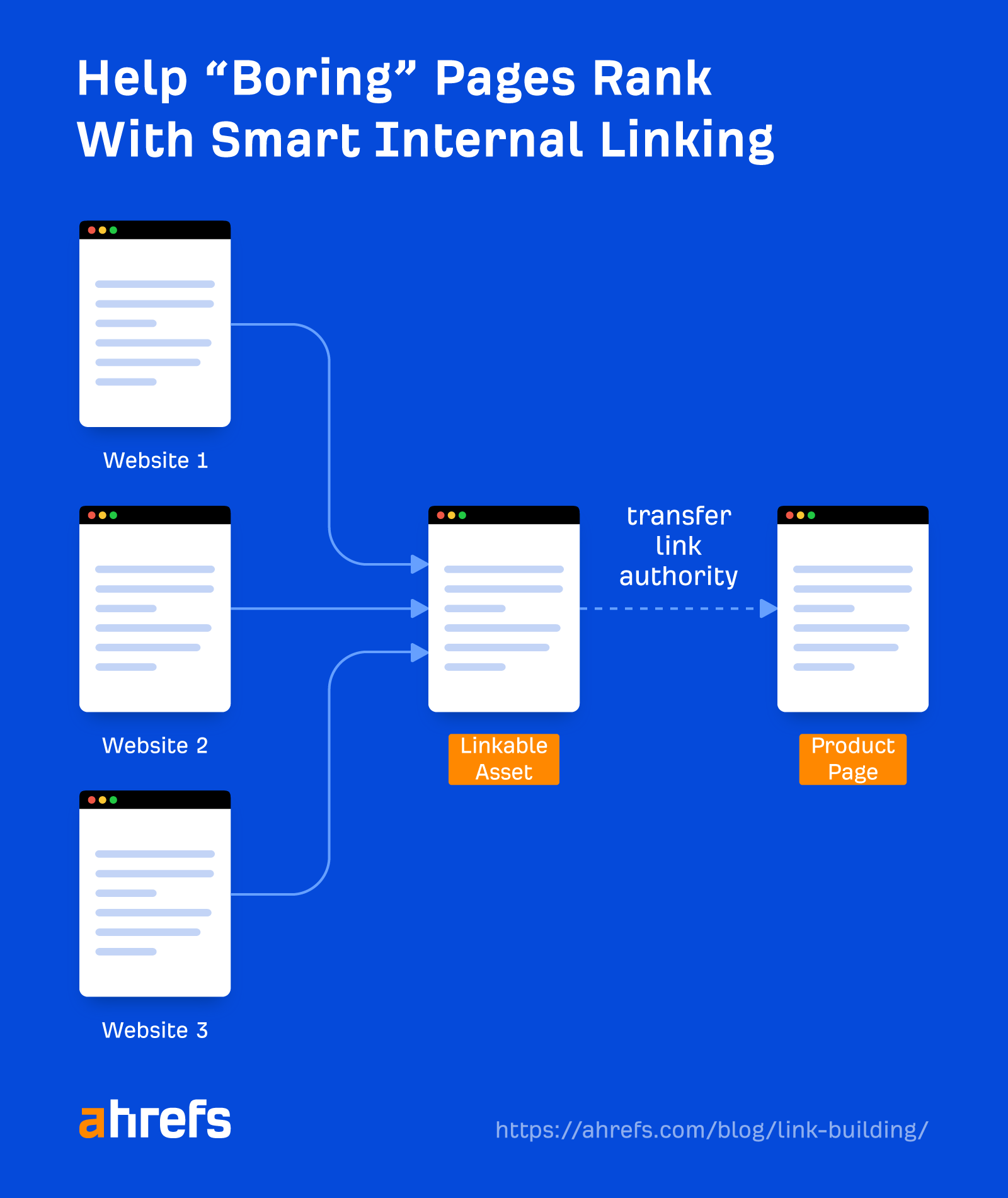
How do you find good link bait ideas? The best way is to piggyback off what’s working for your competitors:
- Go to Ahrefs’ Site Explorer
- Enter your competitor’s domain
- Go to the Best by links report

Look through the list to see what kinds of formats and topics resonate with people in your niche. For example, we can clearly see that studies and statistics are popular in the SEO space:

Guest blogging
Guest blogging is when you create content for other websites. In the process, you’ll usually be allowed to link back to your website.
Here’s how you can find potential guest blogging opportunities:
- Go to Ahrefs’ Content Explorer
- Set the dropdown to “In title”
- Enter a relevant keyword
- Set these filters:
- Language filter to English (or your target language)
- Live/broken filter to Only live
- Filter explicit results to On
- Domain Rating filter to 30–90
- Website traffic filter to >500
- Check One page per domain
- Check Exclude homepages
- Check Exclude subdomains
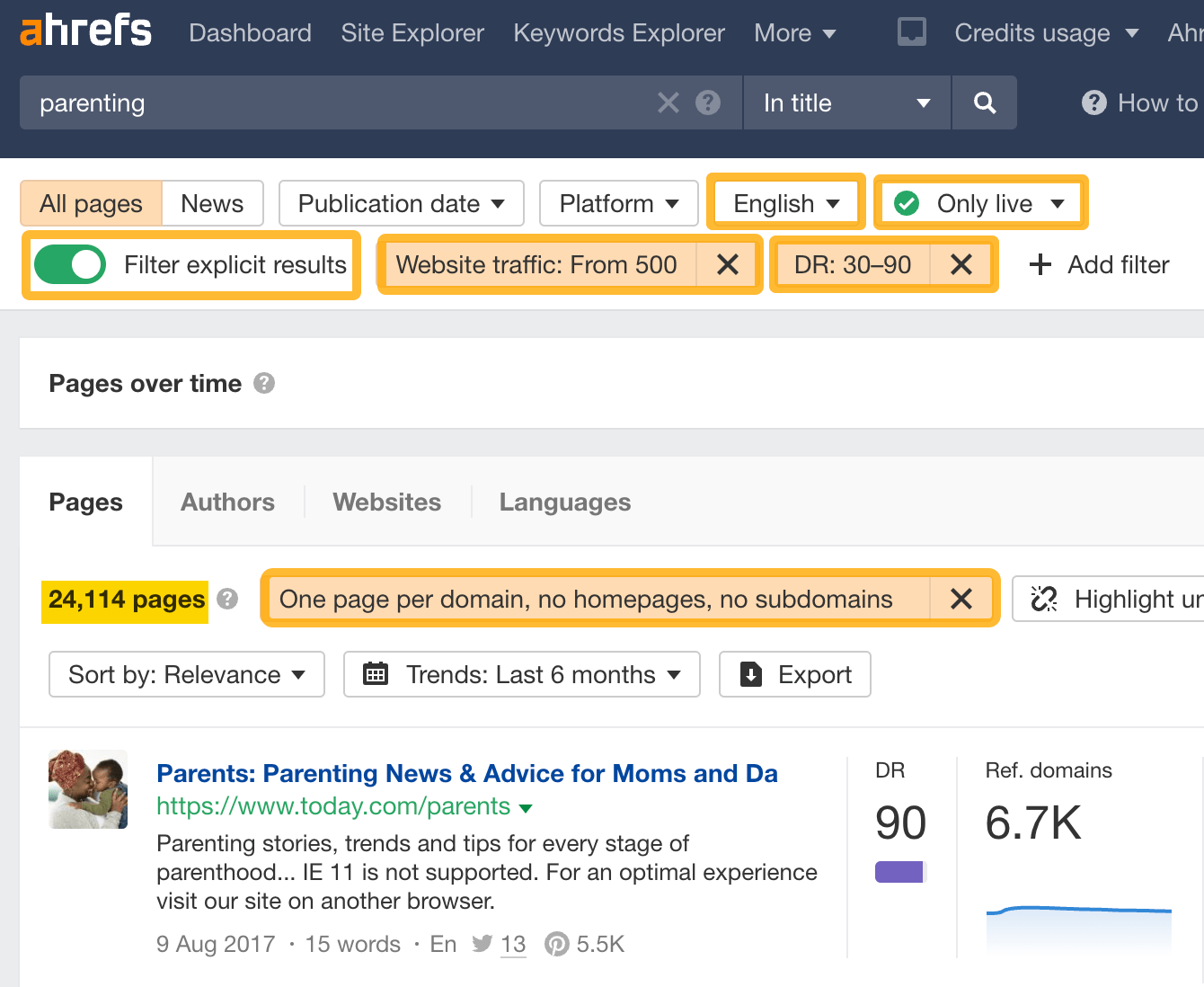
Look through the results and pick out relevant sites you could guest write for. Find the right person’s email and pitch them.
Reactive PR
Reactive PR is where you react quickly to time-sensitive opportunities to earn links. The idea is simple: Sign up for services where journalists are looking for sources, then be one of the first few to respond. That way, when the journalist selects your quote, they’ll link back to your site.
In the past, it was common to use Help a Reporter Out (HARO). However, its parent company, Cision, has killed it and wrapped it into a new product.
Don’t worry, however. There are still plenty of similar and free alternatives around, such as:
See more alternatives in our list of HARO alternatives.
Final thoughts
White hat SEO is about the right mindset: putting users first, creating useful content, and not spamming people.
Some black hat SEOs may be able to get results in the short term, but white hat SEO is essential for long-term success.
Remember, white hat SEO is a marathon, not a sprint.
Any questions or comments? Let me know on Twitter.



